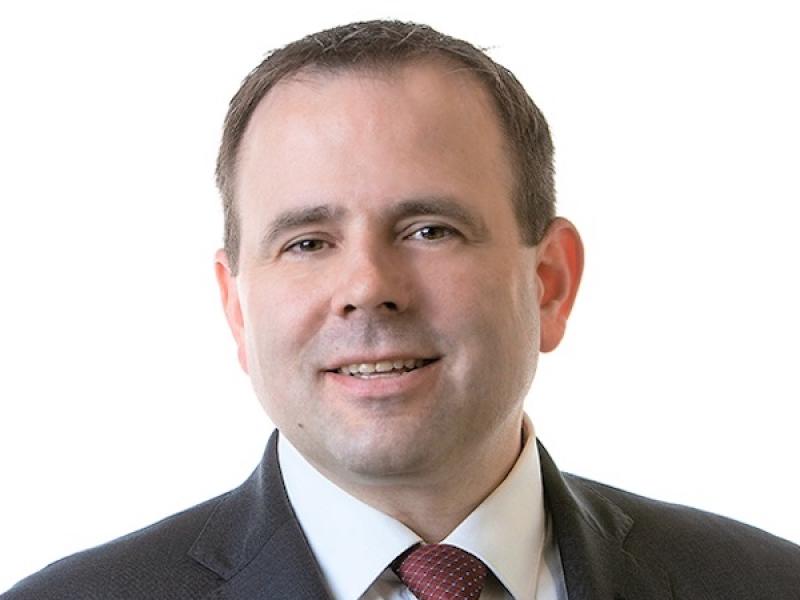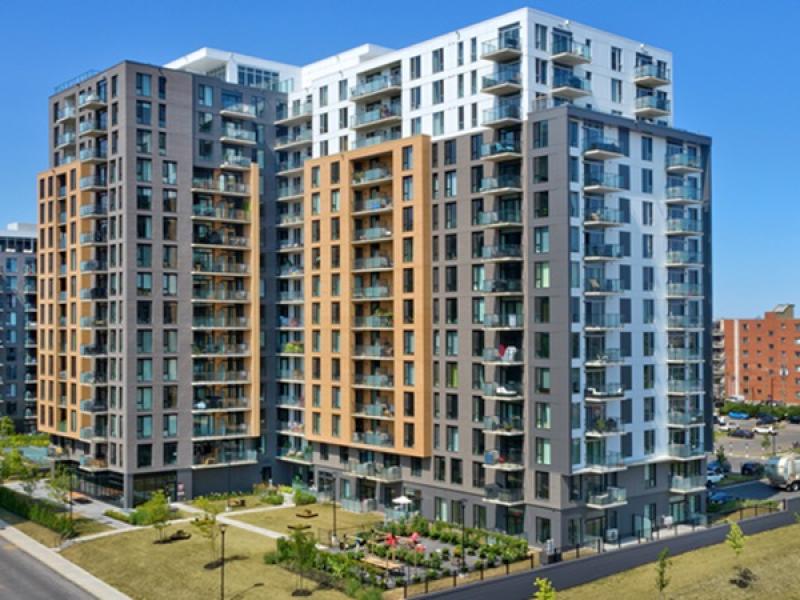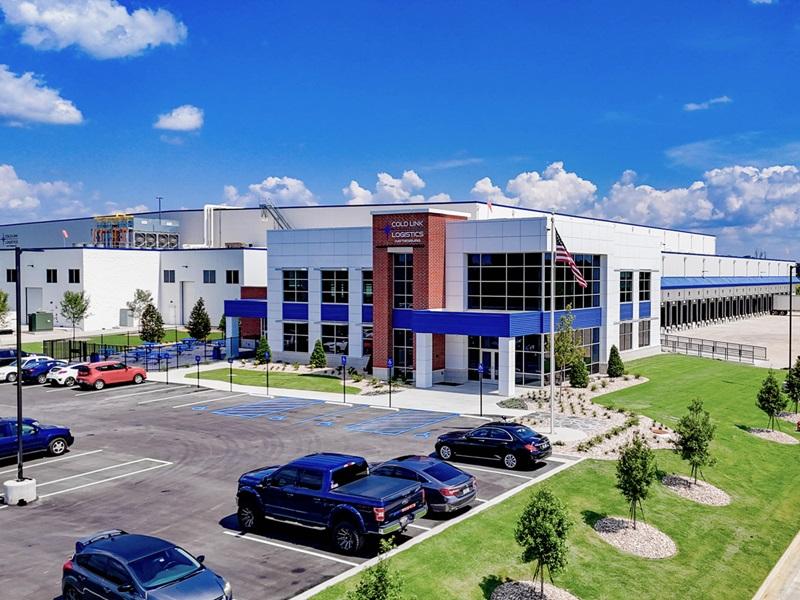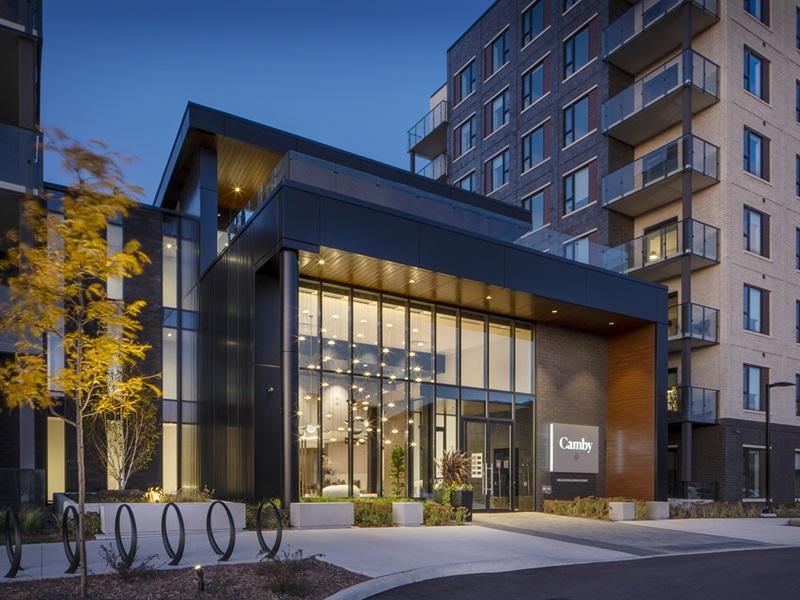
Riaz Mamdani, CEO of Calgary-based Strategic Group. (Image courtesy Strategic Group)
Calgary-based Strategic Group has launched an aggressive plan to repurpose under-utilized office space in the city for residential use, as it sees future growth in this segment of its real estate portfolio.
CEO Riaz Mamdani says Strategic is very bullish on the residential market and is both repurposing office space and building new rental units. Strategic has 2,438 residential units either under construction or planned — 995 currently being built and 1,443 to be built in coming years. The business plan involves purpose-built, multi-family rental buildings.
“New construction is a viable business today for us. It’s a good business and it’s a way that we’re going to continue to increase our residential portfolio,” Mamdani told RENX in an exclusive interview, “so that we continue to evolve and grow that side of the business for the next 10 to 12 years when we know that our office buildings are going to be flat. Our growth is going to come from our residential.
“We’ll get stability from our retail, growth from our residential, and on the office we just have to maintain it and do the absolute best we can while we ride out a storm.”
Four redevelopments underway
Strategic has four buildings under active repurposing in Calgary and Edmonton. Beyond that, Mamdani said, future repurposing projects will be restricted to Calgary.
“On the repurposing side, we have another three to five that we’re in the investigation and feasibility stage on. If things go the way that they might go, they’re probably projects we do in the next three to four years,” he said. “Once our two conversions in Edmonton are complete, our opportunity within the portfolio on conversions is concluded in Edmonton. So, it will be a Calgary focus at that point.”
Current conversion projects for the company include:
* e11even, a 12-storey building in Edmonton containing 148,855 square feet of office space which is being converted to a mix of 177 one- and two-bedroom residential rental suites;
* Capital, a 12-storey office building in Edmonton containing 169,096 square feet, which is being converted into 154 residential units, plus a new six-storey building containing 60 residential units;
* Cube, a seven-storey building in Calgary containing 65,157 square feet, which is being converted into 65 one- and two-bedroom rental suites with a rooftop amenity space; and
* Barron, an 11-storey mixed-use building in Calgary containing 99,202 square feet of space, will include 93 residential rental suites as well as offices and retail space.
Strategic Group building in Calgary
In Calgary, Strategic is also building two new mainly residential projects. Marda is a six-storey building containing 8,900 square feet of retail space and 66 residential units, while ONE is a 37-storey mixed-use building with 379 rental units. Strategic also has plans for 86 townhomes in its existing Terra development in Airdrie.
Strategic has about three million square feet of office space in both downtown Calgary and the suburbs, with a total portfolio of about 7.5 million square feet including retail and residential.
Mamdani said the company felt some huge contractions a few years ago in the requirement for office space in Calgary.
“For that to reach an equilibrium is going to take somewhere between 10 and 12 years and that’s assuming that (there is) five or six or seven hundred thousand (square) feet of positive absorption per year for the next 10 to 12 years before we reach some sort of reasonable equilibrium,” said Mamdani.
“We’re calling that number 10 per cent (vacancy). It’s not a landlord’s market and it’s not a tenant’s market. Ten per cent seems to be the number where we can say we have a viable office market out there.
“We’re gearing our business around slugging it out for the next 10 to 12 years, filling our space, converting our space, repurposing a bunch of it, consolidating our tenants to where it makes the most sense. Dealing with those buildings that might be functionally obsolete . . . figuring out what Plan B is for those buildings.
“For those buildings that make sense to continue as office buildings, we heavily invest in them. We make them the most attractive buildings for tenants in that particular neighbourhood or that particular class.
“Our office vacancy may be over 25 per cent, but our portfolio vacancy is much less because of the strategies that we’ve employed. (It’s) a weak market and we’re doing everything we can to deal with that weak market.”
In a full occupancy office market, there are no “functionally obsolete” office buildings because everything is full, Mamdani explained. However, when vacancy is in the 20-plus per cent range, landlords end up with functionally obsolete buildings which need very significant capital, or a repurposing, to be revitalized and to again have a useful life.
Portfolio well-suited for repurposing
“What we have to do is look at opportunities within our portfolio to look at buildings that would require capital in order to become less functionally obsolete — to become the most attractive in their class — and we quantify that amount of capital versus the amount of capital that’s required for a repurposing,” said Mamdani.
“For us, repurposing assets with our size of office portfolio creates a bunch of efficiencies because we are able to move people from buildings that we want to be residential to buildings that we think are good long-term office buildings.
“We have the synergy of a portfolio that allows us to move tenants around. Not every obsolete office building or every vacant office building makes a good residential building. You have to have efficiencies of floor plate.
“You have to have neighbourhood. You have to have amenities. You have to have the zoning. You need all of these boxes to be checked before you can go and say this is a viable residential repurposing.”
On the residential side of its portfolio, Strategic has about 1,500 rental units between Edmonton and Calgary. Mamdani said 83 per cent of Calgary’s multi-family rental market is in excess of 20 years old. The percentage is similar in Edmonton.
“So, given the age of some of these units, it’s a very different business than the newer apartment units which we built. One hundred per cent of our apartments are under eight or nine years old . . . so, a very different product with two different business plans,” he said.
Rentals more attractive
Higher interest rates, the mortgage stress test which makes it tougher for people to borrow money to buy a home, and elevated house prices are turning more people in Calgary to the rental market.
“The rental market . . . continues to grow in Alberta. Calgary has the highest per capita number of millennials anywhere in Canada. Millennials have the propensity to rent. In addition to those factors, we have migration – a combination of interprovincial migration and international migration gives Calgary pretty healthy numbers. . . . These people are renters to start with,” explained Mamdani.
While Strategic’s future growth is in the residential side of its business, Mamdani said the company is also focusing on the office portfolio. The company is not abandoning the office business, but recognizes it’ll be, at best, a very flat business for the foreseeable future.
“We’re going to service it. We’re going to look after it. And we’re going to nurture it for the next 10 to 12 years. We recognize, though, that we can’t call that a growth business. We’re a growth company and today our only growth can come from the residential side.
“The niche in the residential market we’ve chosen is the multi-family real estate and that’s where our growth is going to come from,” he said. “It’s a coincidence that we also own some office buildings that we’re struggling with. So, we’re moving assets from where we’re struggling to where we see a growth opportunity.”
Calgary’s office market has been struggling for the past few years with elevated vacancy rates.
“Uncertainty” mixed with “optimism”
The city’s overall economy took a sudden turn in direction in late 2014 when oil prices collapsed. That created a recession in both 2015 and 2016 as thousands of jobs were shed, particularly in the oilpatch and in downtown corporate head offices.
While the economy rebounded somewhat in 2017 and 2018, it has been a very slow and cautious recovery.
“I see uncertainty. And I see uncertainty when it comes to the oil and gas industry and what 2019 budgets look like and what capital spending in 2019, 2020, 2021 looks like. There’s uncertainty around that,” said Mamdani. “But there’s an optimism.
“There’s a business confidence and a consumer confidence in everything else that’s not oil- and gas-related. I think the current optimism is causing our retail tenants to invest in their retail businesses. The service sector continues to expand. Our service office tenants continue to expand.
“A couple of quarters ago, our engineering firms started to expand. That’s on pause today but we did see expansion across the board including the oilfield services engineering firms.
“So, that optimism, that investment in the economy is remarkable given the uncertainty around such a significant sector or a significant portion of our overall economy.”







